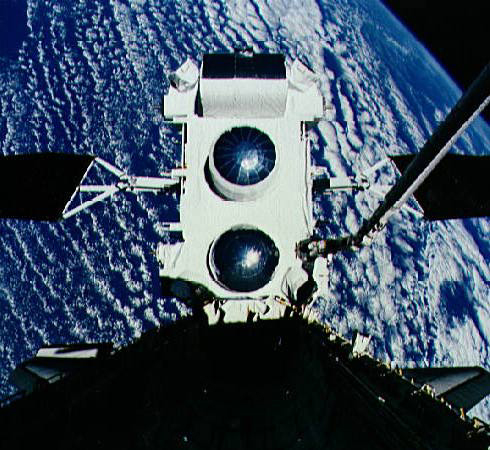Introduction

The 15900-kg Compton Gamma Ray Observatory, launched on the Space Shuttle Atlantis on 5 April 1991, is the second in the fleet of NASA's Great Astronomical Observatories. Mission goals include performing broad-band gamma-ray observations with better angular resolution and an order of magnitude better sensitivity than previous missions, performing the first gamma-ray full-sky survey (completed in 1992), and compiling a database of gamma-ray burst measurements unprecedented in size and scope. The scientific theme of the mission is the study of physical processes taking place in the most dynamic sites in the Universe, including supernovae, novae, pulsars, black holes, active galaxies, gamma-ray bursts, and solar flares. The four scientific instrument packages - the Burst And Transient Source Experiment (BATSE), the Oriented Scintillation Spectrometer Experiment (OSSE), the Imaging Compton Telescope (COMPTEL) and the Energetic Gamma Ray Experiment Telescope (EGRET) - combine to cover the hard X-ray and gamma-ray energy regimes from 15 keV to 30 GeV. BATSE is optimized to measure brightness transient phenomenon time scales down to microseconds over the energy range 30 keV to 1.9 MeV. OSSE is designed to undertake comprehensive spectral observations of astrophysical sources in the 0.05 to 10 MeV range. COMPTEL provides source mapping over a field of view of about 1 steradian, and has performed the first sky survey in the energy range from 1 to 30 MeV. EGRET is the highest energy instrument on Compton, and covers the broadest energy range, from 20 MeV to 30 GeV. It has a wide field-of-view, good angular resolution and very low background. This poster depicts some scientific highlights of the mission thus far.
If you have a question about CGRO, please contact us via the Feedback form.

